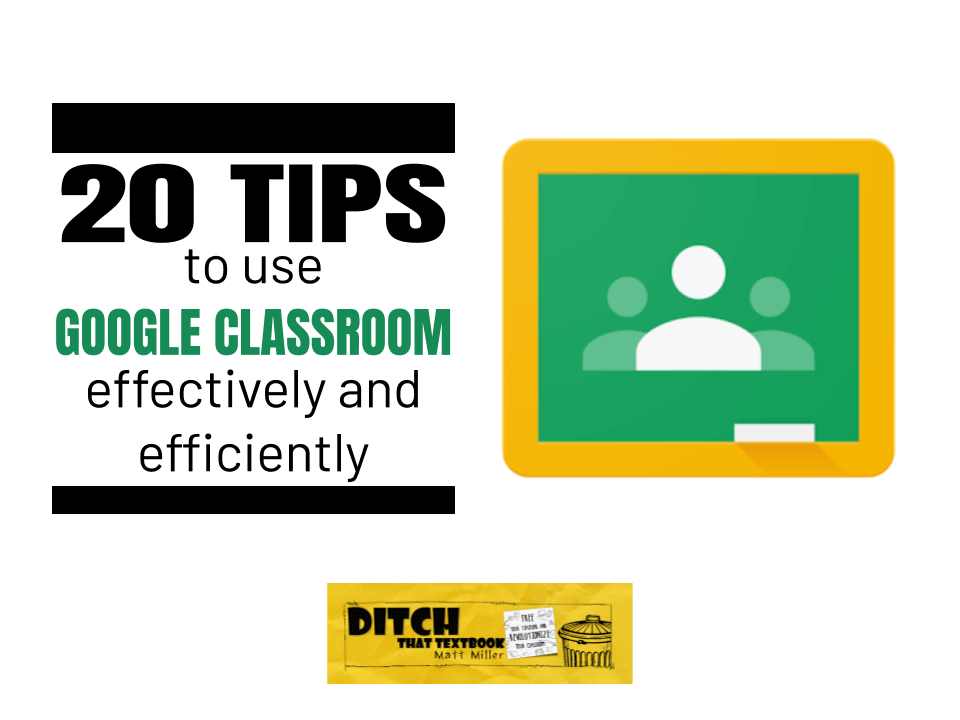
Google Classroom can be even more powerful with a few tips and strategies to make it efficient and effective.
Google Classroom streamlines the management of student work — announcing, assigning, collecting, grading, giving feedback and returning. It has certainly saved many teachers hours of work.
Without a solid workflow and some strategy, grading digital work can be cumbersome. Google Classroom does make working with student work more efficient — but only if you understand how Classroom works and how to use it to your advantage.
Sometimes, a few quick tips can make all the difference.
Below are LOTS of tips!
- In "20 tips to use Google Classroom effectively and efficiently," the second 10 tips are all submitted from readers of the Ditch That Textbook blog.
- There's a whole free ebook of Google Classroom tips! Download and read the 50+ Google Classroom tips and tricks ebook!
- Plus, check out the "30 Google Classroom tips every teacher must know" ... they're submitted from the #DitchBook Twitter community!
10 new Google Classroom tips for 2024
Google Classroom is constantly evolving. Google often releases new features at key moments -- at the beginning of the school year, at major conferences, etc.
At the 2024 BETT Show, Google unveiled some new features in Google Classroom. Recently, we met with Brit Mennuti, Google product manager who works with Google Classroom. She shared some tips for the new features -- and some hidden gems you might not know about.
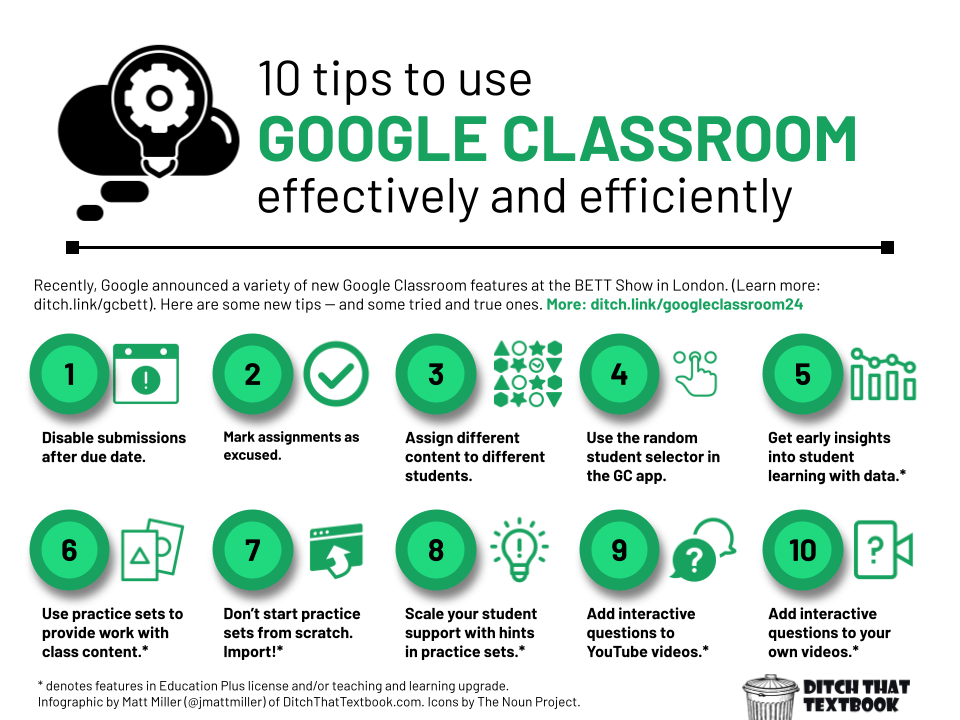
1. Disable submissions after due date.
In the past, there was no way to turn off the "Submit" button after a due date has passed. No longer! When setting a due date for a Google Classroom assignment, check the box below the due date to disable submissions for an upcoming task. Or set the due date later -- at the end of the semester, maybe, and add the checkbox later.
2.Mark assignments as excused.
With assignments, sometimes things happen. For whatever reason, you might need to excuse a student from an assignment -- instead of marking a grade or leaving it blank. You can do that in Google Classroom. Go to the Grades tab and find the score for an individual student's assignment. Click the three dots on the student's individual grade and choose "Excuse." It'll exclude it from the grade average. The excused grade will pass to your student information system, too, if your Google Classroom syncs.
3. Assign different content to different students.
File this under "why didn't anyone tell me this?". When making an assignment, if you haven't clicked the "all students" button recently, you should. You can check and uncheck individual students to create assignments specific to those students' reading level, mastery of standard or skill or goal, etc.
💡 Bonus tip: To make small variations to an assignment for multiple student groups, create the assignment and assign it to one set of students. Then reuse the assignment, change the wording, and assign it to different students. Repeat as needed.
💥 NEW FEATURE: Persistent groups: Coming for the 2024-25 school year are persistent groups. You'll be able to set groups that can be continually used throughout the year, assigning new assignments to the same sets of students. Those groups will be able to be modified if the groups need to change (i.e. a student's reading level improves them to a different group).
4. Encourage participation with random student selector.
Toss that jar of popsicle sticks for something better. Google Classroom has a random student selector in its mobile apps (iOS and Android). Tap the People tab. Then, choose the icon in the top right corner for the random student selector.
The selector will choose students randomly. It'll show you how often the student has been called. You can also mark a student as absent or choose to call them later.
5. Get early insights into student learning.
If you have an Education Plus license, you can access a dashboard with insights into your students' use of Google Classroom and their learning progress. See detailed analytics for specific students, class assignment completion data, and more. Use the dashboard to identify when students aren't meeting goals for a class, tracking the average time since students were active last in Classroom, when their grade average goes down, and more.
6. Use practice sets to provide work with class content.
If your district has purchased Education Plus licenses or the teaching and learning upgrade, practice sets are available. These are interactive learning activities you can custom create for students. Practice sets give students an interactive canvas, places to work through their answers, hints, and more. Students can check their work for accuracy and receive support resources when they struggle.
💡 Bonus tip: When you add questions to practice sets, tag them with skills. These tags connect to learning objectives and standards to help you track progress on them. It'll also help to attach support resources that are related to each problem.
7. Don't start practice sets from scratch. Import!
If you have a PDF file with questions you want to include in your practice sets, use it! Upload the PDF. Then use the highlight tool to select the problems you want to include -- instead of typing them or creating them from scratch.
Bonus: You can now import questions from a Google Form into practice sets.
Once you've created something you love, you can share your practice sets with other teachers in your verified domain. Just enable link sharing and copy/share the link.
Practice sets are available for Education Plus licenses or the teaching and learning upgrade.
8. Scale your student support with hints.
Practice sets can include hints -- little bits of information to guide them without giving away the answer. Practice sets offer AI-generated (and human vetted) hints you can add to your questions, suggested to you based on the content in your question. You can also type your own hints.
Practice sets are available for Education Plus licenses or the teaching and learning upgrade.
9. Add interactive questions to YouTube videos.
Ever wanted to add interactive questions to a YouTube video that students must answer before moving on? Now it's possible.
Anyone with an Education Plus license or teaching and learning upgrade has access to YouTube interactive questions. These questions let students watch the video and answer the question. If the student struggles, there's a "rewatch" button to take them back to the part of the video that discussed that content.
You can add questions generated by AI (that have been reviewed by humans). Just look for the little yellow diamond when adding a video for those suggested questions. (If you can't see the suggested questions yet, you should have access in 2024.)
10. Add interactive questions to your own videos.
You don't have to stick with just videos you find on YouTube. You can make your own! Record your video and add it to YouTube as unlisted. It can be a video you recorded with your camera or a screencast video -- or something completely different! Then, the transcript can be translated into a variety of languages.
20 tips to use Google Classroom effectively and efficiently
2. Email everyone in a class in the “People” tab.
Once you click the “People” tab, click the checkbox above all of your students to highlight everyone. Click “Actions” and “Email.” This is great for calling special attention to something you want to communicate to students OR for longer-form communication.
3. Use the right kind of comment.
There are several kinds of comments you can leave students in Classroom. Knowing how each one works can make you more efficient and effective.
- Adding class comments: Do this by adding a comment in your class stream on the “outside” of an assignment or announcement. This will make the comment visible to the entire class (important if it’s an answer to a question anyone might have).
- Adding private comments: Do this by viewing student results and clicking on an individual student. On the right, where you can see student submissions, the comment bar at the bottom adds a comment that only the student can see (important if it has sensitive grade or feedback information).
- Adding comments in a doc/slide/sheet/drawing: Do this by clicking on the student’s file that he/she submitted to you. Click the black speech bubble icon after highlighting something you’d like to comment on. This adds a a very pointed comment on specific items in student work (important to be very exact in feedback).
5. Use the keyboard instead of the mouse.
Keyboard commands beat moving and clicking the mouse every time. The best one in Google Classroom: When entering grades, type the grade for a particular student’s assignment, then click return to get to the next student. Cycle through students with keystrokes instead of mouse clicks to save lots of time.
Check out 22 killer keyboard shortcuts (and a challenge!) for busy educators for more.
6. Reuse posts.
Don’t recreate assignments, announcements or questions that are similar to those you’ve already created. Click on the Classwork tab then click the “create +” button in the top left and select “reuse post.” Choose an assignment, announcement or question you’ve created before. You can modify and update it before you repost it.
- When you reuse a post, you can even choose to create new copies of all the attachments you used before.
8. Get email from Classroom the way you want.
Do you spend too much time deleting email notifications from Classroom and wish you could turn them off? Click on the three lines in the upper left corner. Choose “Settings” at the bottom. There’s a checkbox where you can turn off email notifications. (Or if you have it turned off and wish you’d get emails, that’s where you turn them on!)
9. Get ideas from others.
Educators that are already using Google Classroom hang out in lots of online communities where you can read their posts and ask questions. Here are some suggestions:
- Twitter hashtag: #GoogleClassroom (for Google Classroom-specific posts)
- Twitter hashtag: #GoogleEDU (for general Google updates)
- Check out our Google Classroom Pinterest Board for TONS of awesome tips, tricks and ideas
Lean on the knowledge of others. If you are willing to get help and advice from other teachers, you will do just fine with this system. -- Kina Gill
10. Get the features you really want in Google Classroom.
Do you have a suggestion for a new Google Classroom feature? Is there something you can do but wish you could do it easier? This type of feedback is what the Google Classroom team craves from teachers. Click the “?” button in the bottom left of the screen and choose “Report issue or request feature.” According to the Google Classroom team member that talked to my Google Teacher Academy group in December 2014, someone from their team reads every single feedback item sent that way. It’s how they’ve made many of the important feature changes to Google Classroom. And the more popular a feature request, the more likely it’ll be implemented. So send feedback and send it often!
12. Schedule assignments ahead of time.
Take advantage of the scheduling option. Once I have my lesson plans done for the next week, I set up everything on Classroom for the next week. Scheduling everything to appear later on the correct day means I don't forget to post something in the morning when I get to school. -- Gwen Hammerschmidt
13. Ask a question to amplify student voice.
Utilize the create a question function to encourage and facilitate class disc. Students not only get a platform to have their voices heard, but they also learn to virtually listen and engage with their peers by responding directly to them. -- Cornelia Moore
15. Turn off stream notifications.
Click the gear icon in the top right of your screen and scroll down to the Stream. SHUT OFF notifications in the Stream. This will keep your announcements and student collaborations more organized and easier to find! -- Laurie Guyon
Teachers/students new to Google Classroom especially get confused by the Stream - many see assignments, etc there, and never get to the Classwork Tab where there might be beautiful and purposeful organization, so BEST TIP is to go to settings and "Hide Notifications" for the Stream.
The Stream then can be used as a "hallway or cafeteria" or other SOCIAL gathering space. Happy Birthday! Joke of the Day. Would you rather. At the very least, train students to stop here for an overview or announcements for the day. -- Cammie Kannekens
16. Use "assign to multiple classes."
When setting up a new assignment for multiple classes or sections, do not forget about the "assign to multiple classes" feature. Under "FOR" when you set up the new assignment there's a drop down. HINT: once you click "Assign" each assignment must be edited individually so make sure you have everything you want to be done "en masse" otherwise you're going to be going through multiple assignments correcting things (ie. I tend to forget to assign a topic to new assignments so I find myself mass creating an assignment and then wasting time going back and adding it to a topic later...) -- Thomas Fulton
18. Take screenshots as you go and share.
Taking screenshots as you are teaching and then paste them into student work for students who may have been absent or students with accommodations. That way you do not have to go back. This is a good way to help individual students. Also, use screenshots of virtual reading materials so they can be pasted into assignments the students need to refer back to for example a writing assignment that they need to reference a certain part of a text. -- Elizabeth Drummond
19. Make rubrics in sections to grade faster.
When you create rubrics for longer assignments like reports or projects, make the rubric in such a way that you can score one part at a time: for example, the introductory paragraph, the first body paragraph, etc. If you have staggered due dates for each "part" of the assignment or project, you can quickly grade one part at a time as they are due instead of having to grade many whole LOOOONGGG assignments all at once on the final due date. -- Sarah Goldstein
20. Use the "divide and conquer" method with a colleague.
Save time with the divide and conquer method! Each teammate creates assignments in Google Classroom for a content area then you can "reuse post" to drop that pre-created post into your classroom for your students. This is an amazing timesaver! -- Heather Solis
50+ Google Classroom tips and tricks FREE ebook!
Google classroom is great for speed, simplicity, and efficiency but not all functions are easy to get at first and even if you’re a pro there are always new updates and features we need to dive into. So we have compiled our best Google Classroom resources into one ultimate resource to get you geared up and ready for a great year.
But that’s not all! We know that sometimes you want to share great resources with your colleagues and you need an easy way to do that. So we have compiled 50 of these Google Classroom resources, including the quick-start guide, into a FREE ebook that you can email or even print and share if you want to!
30 Google Classroom tips every teacher must know
Google Classroom is constantly getting updated with new features. By utilizing these features we can make Google Classroom work even better. We asked the #Ditchbook community to share their top tips, tricks, and strategies every teacher must know when using Google Classroom. Educators shared ideas for using topics, announcements, comments, feedback, emojis, and more!
Scroll down or click here for 30 tips to help you make the most out of Google Classroom!
Looking for more? Here are some of our most popular Google Classroom posts
What do you do to use Google Classroom more effectively and efficiently? We’d love to hear your ideas!
For notifications of new Ditch That Textbook content and helpful links:
Are you looking for quality, meaningful professional learning that both equips and inspires teachers?
Matt provides in-person and virtual keynotes, workshops and breakout sessions that equip, inspire and encourage teachers to create change in their classrooms. Teachers leave with loads of resources. They participate. They laugh. They see tech use and teaching in a new light. Click the link below to contact us and learn how you can bring Matt to your school or district!
Is Matt presenting near you soon? Check out his upcoming live events!

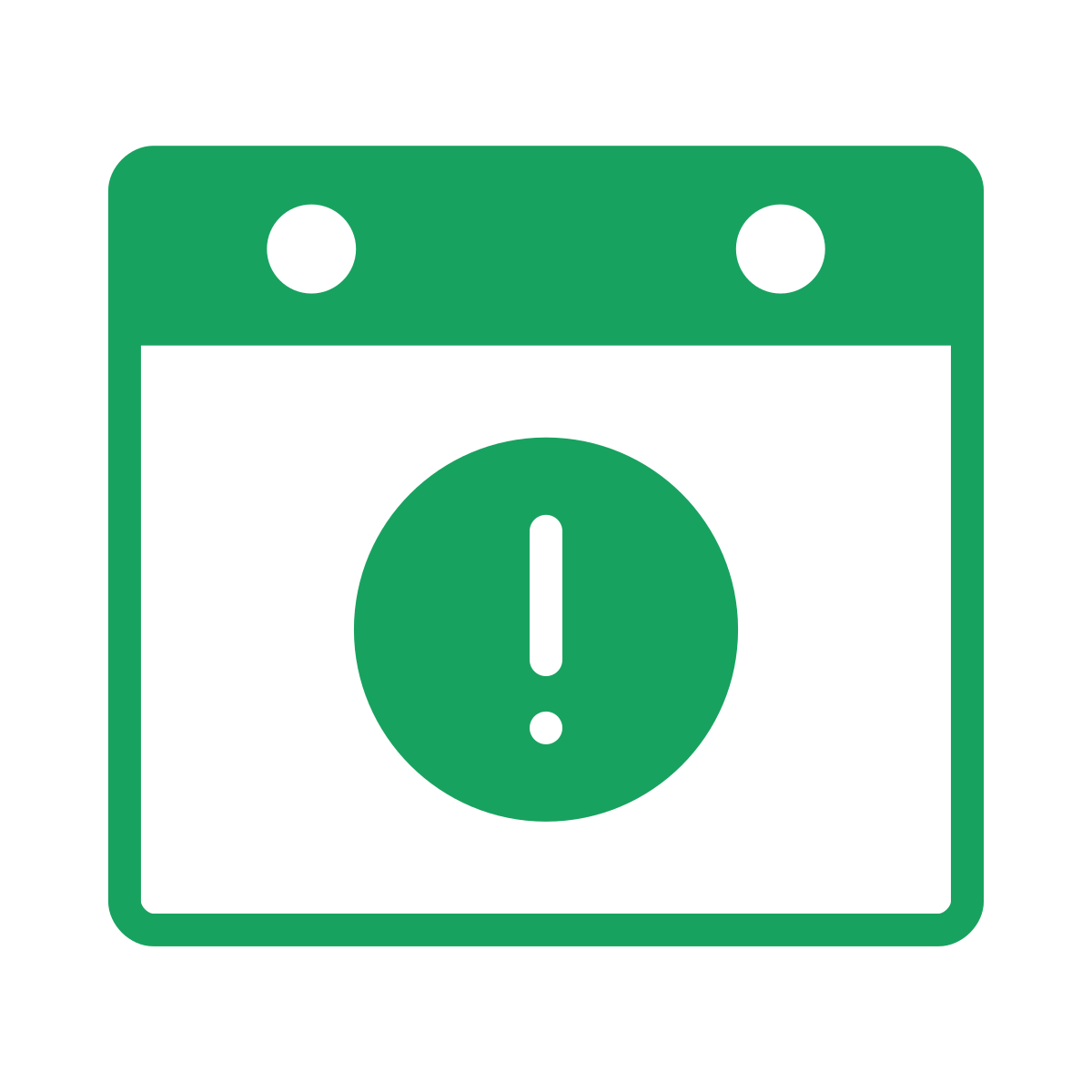
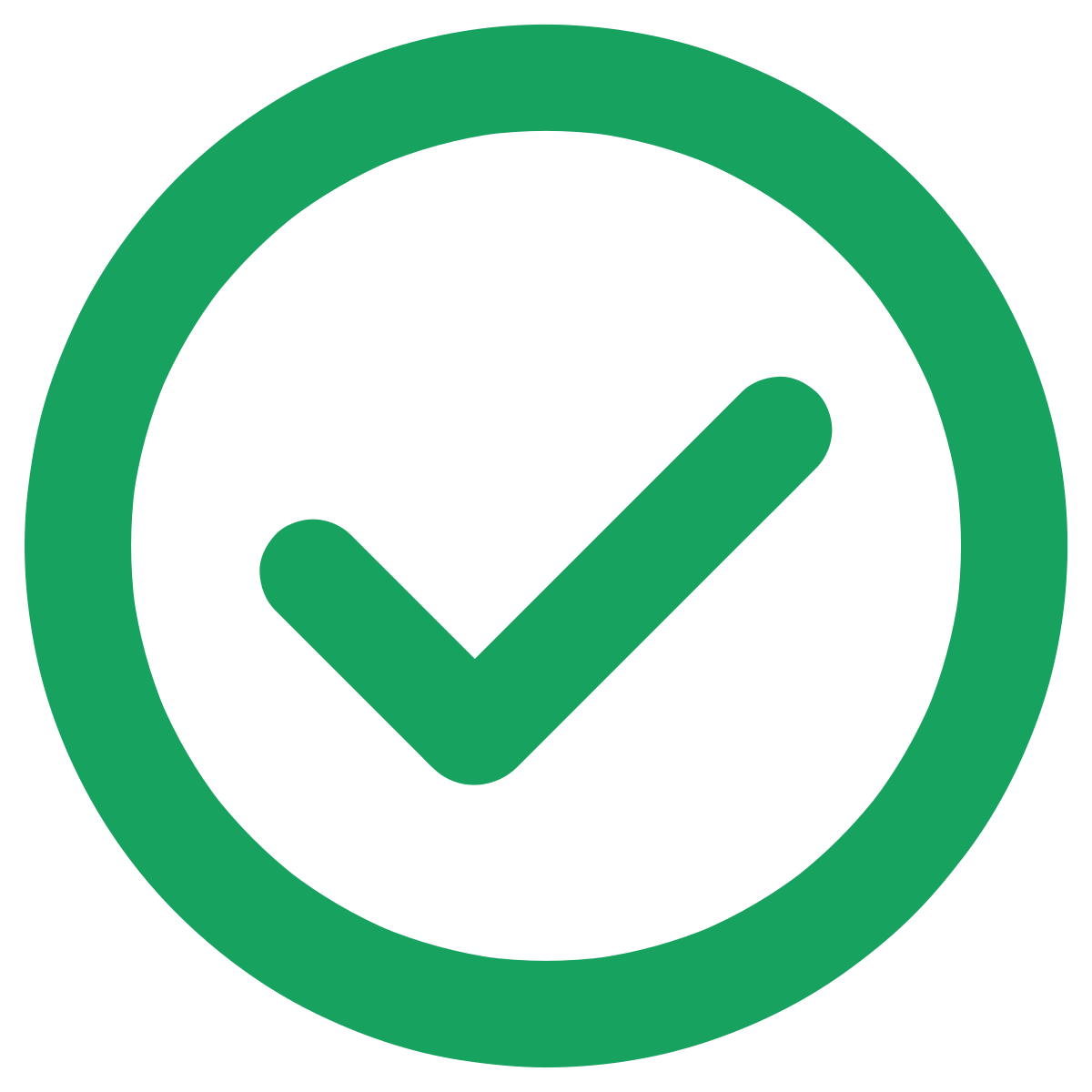



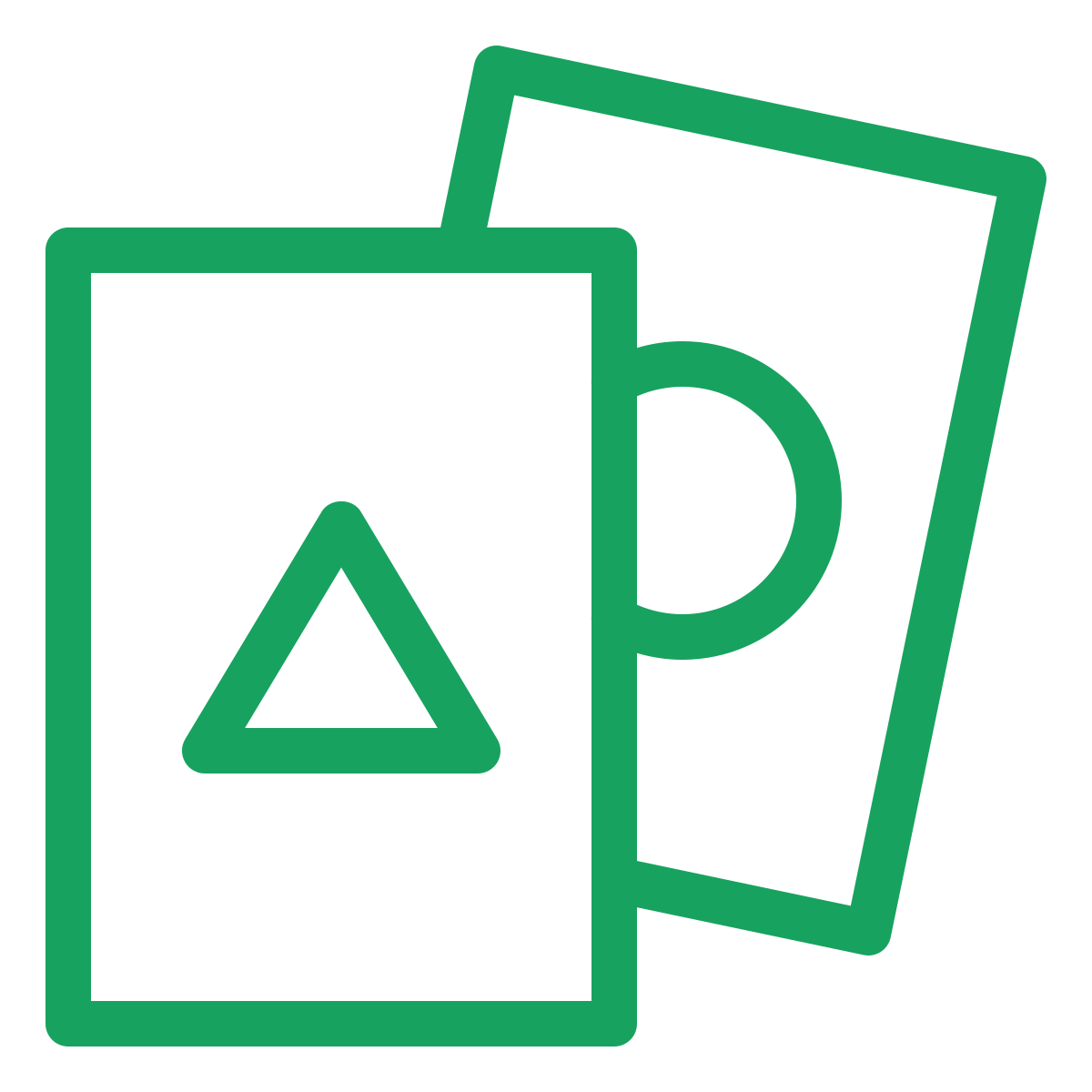




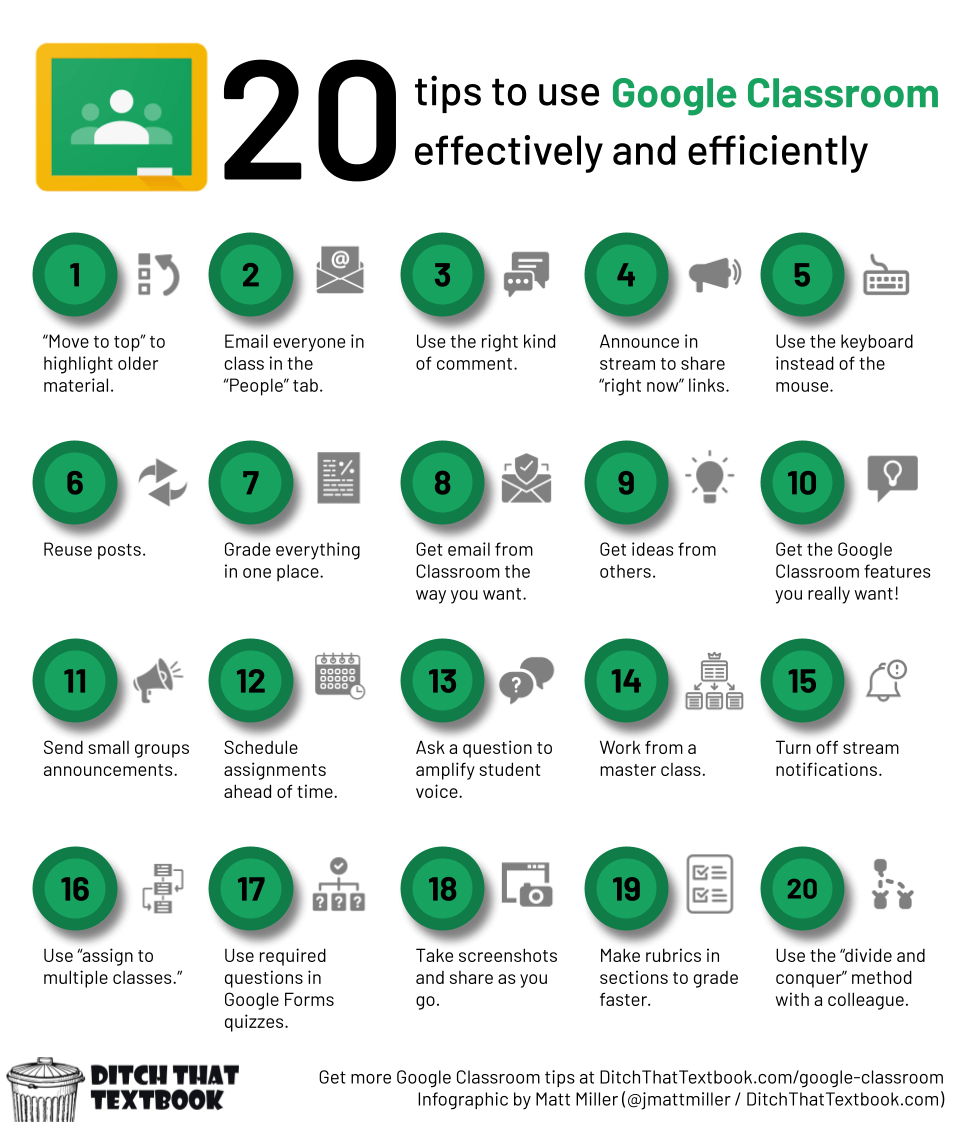








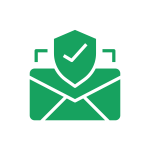



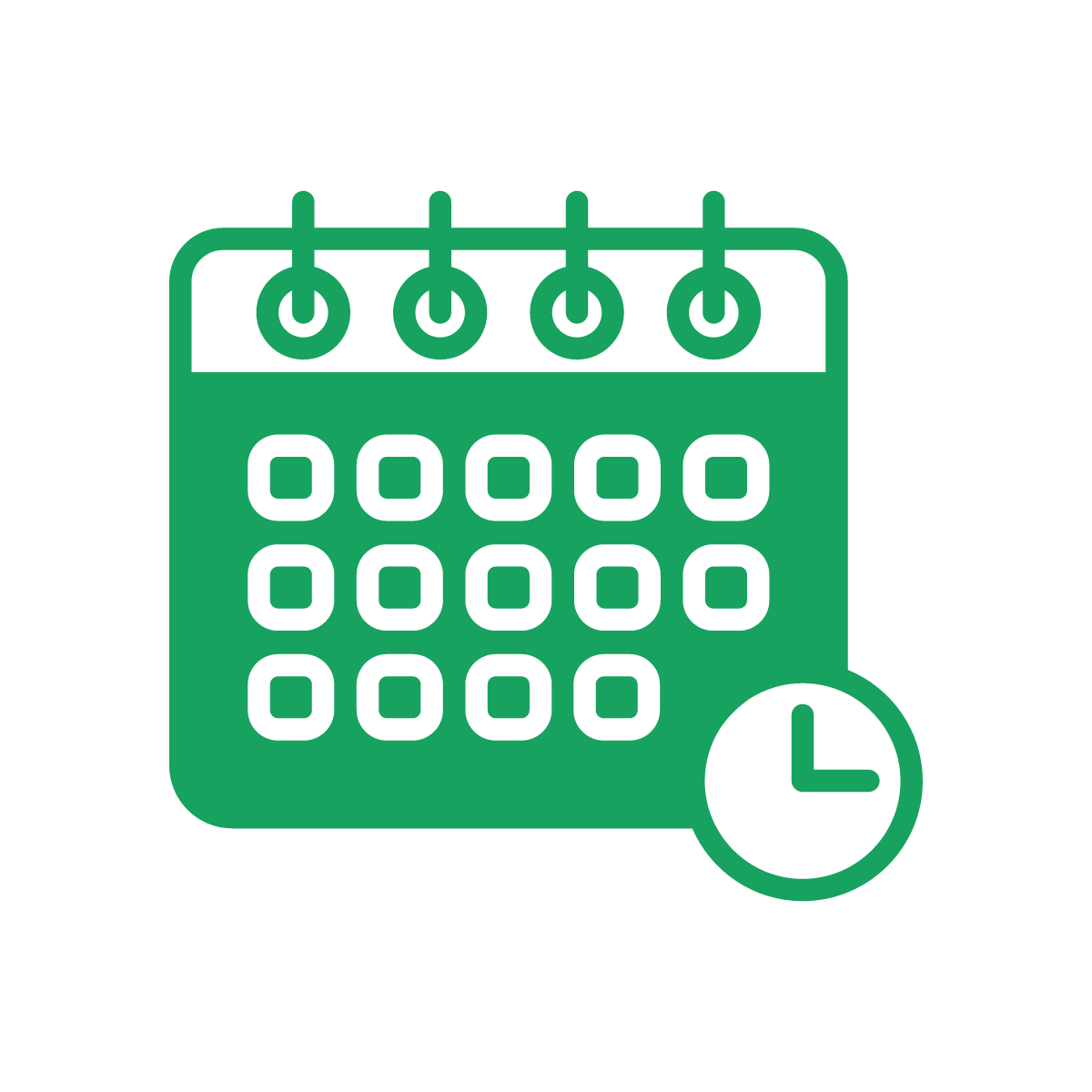


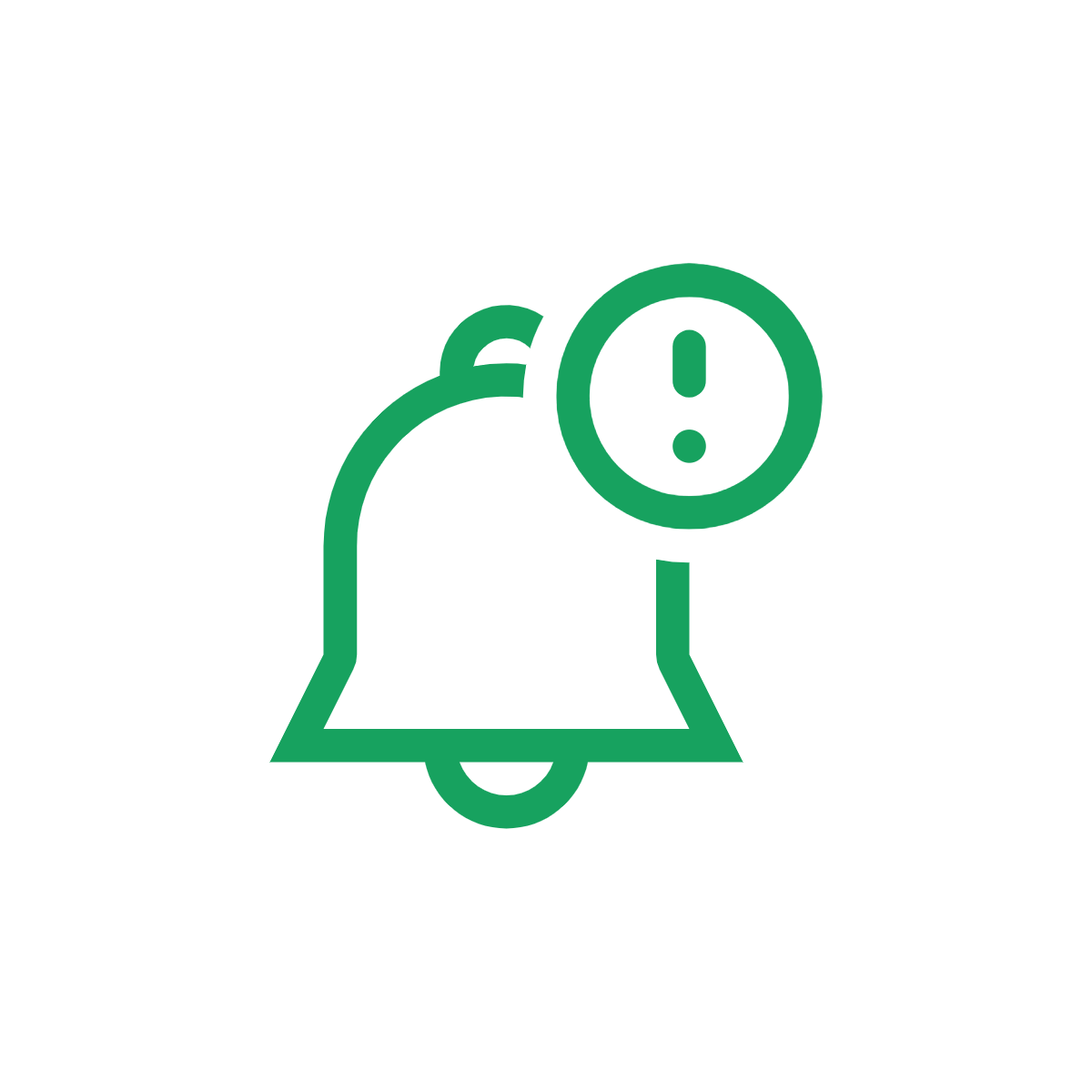
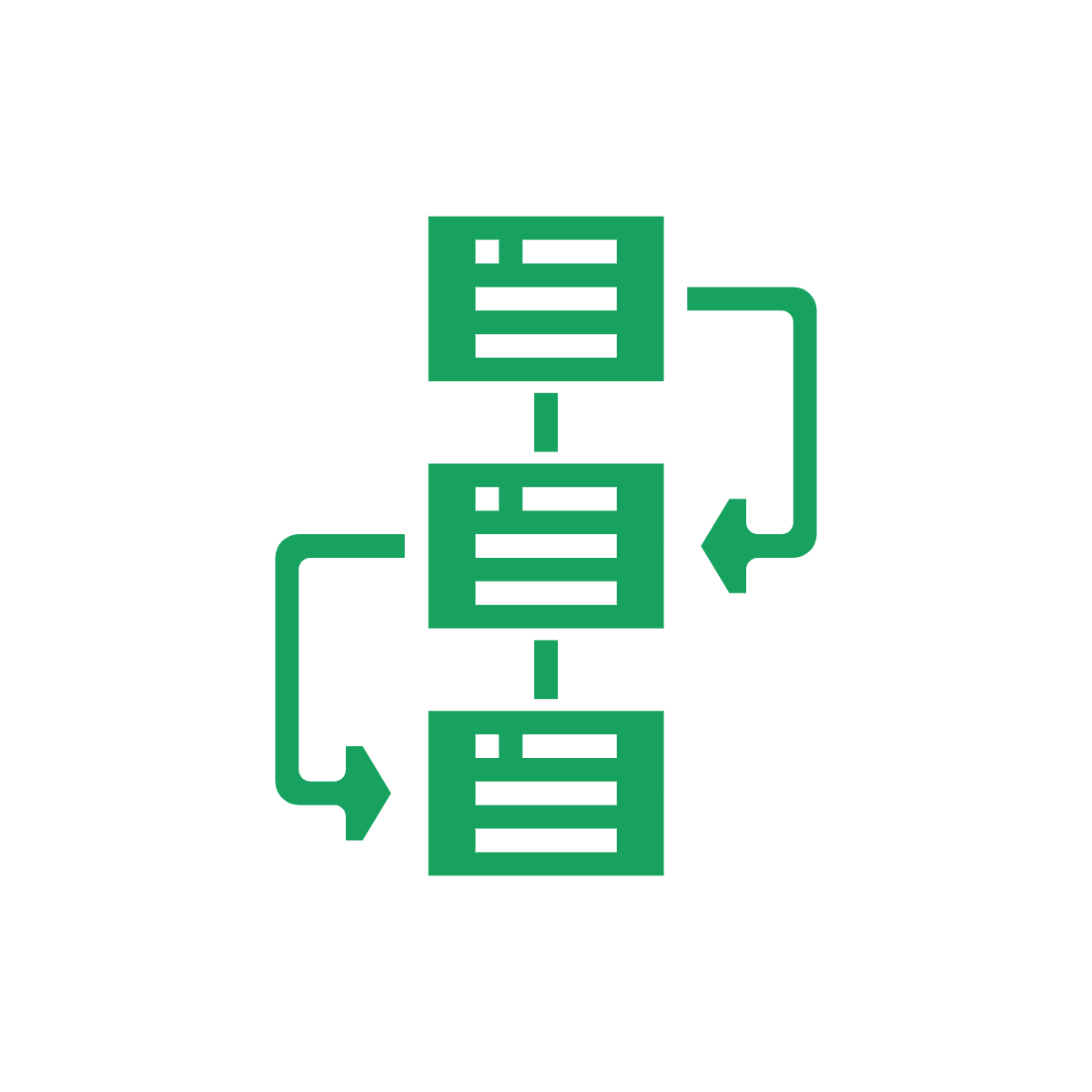
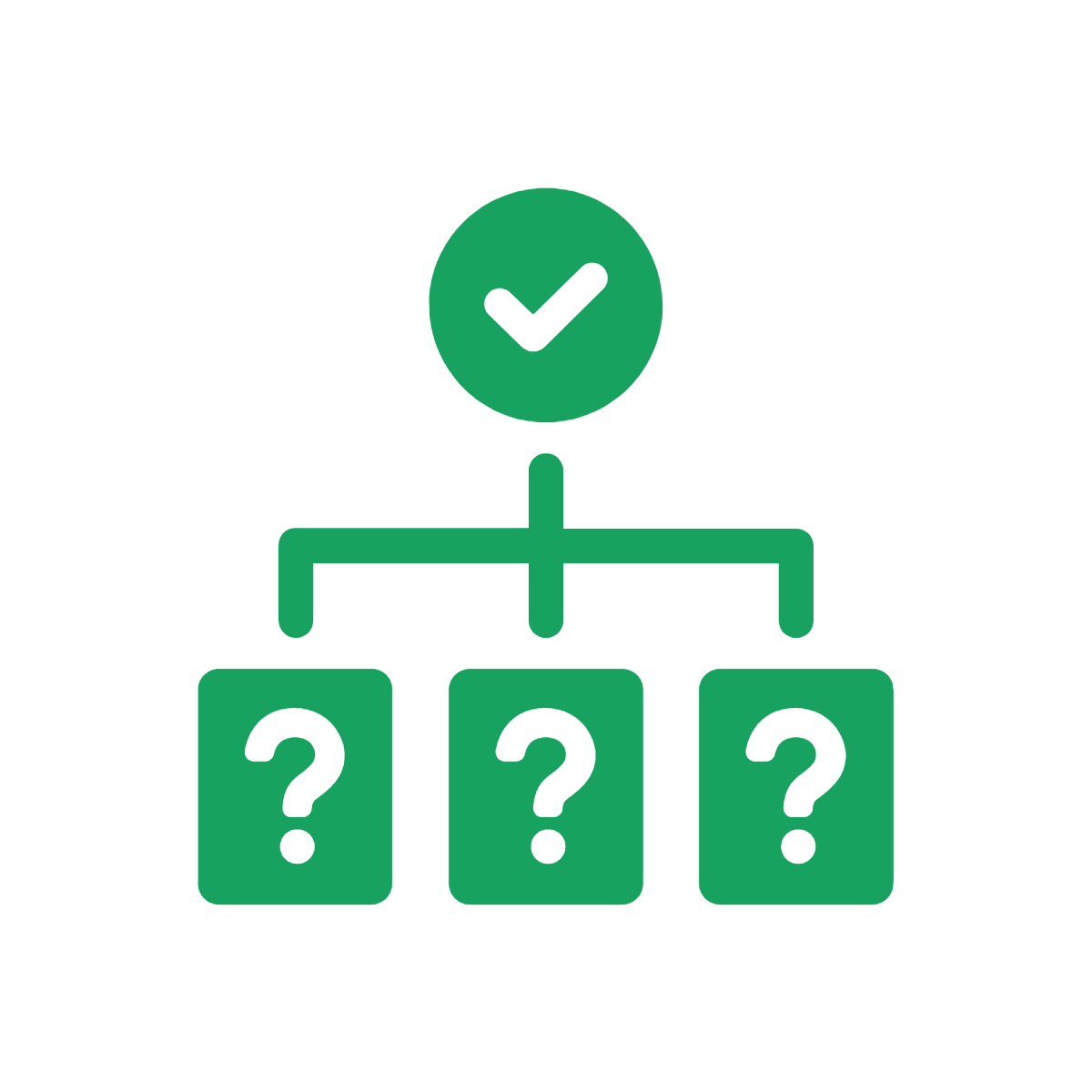

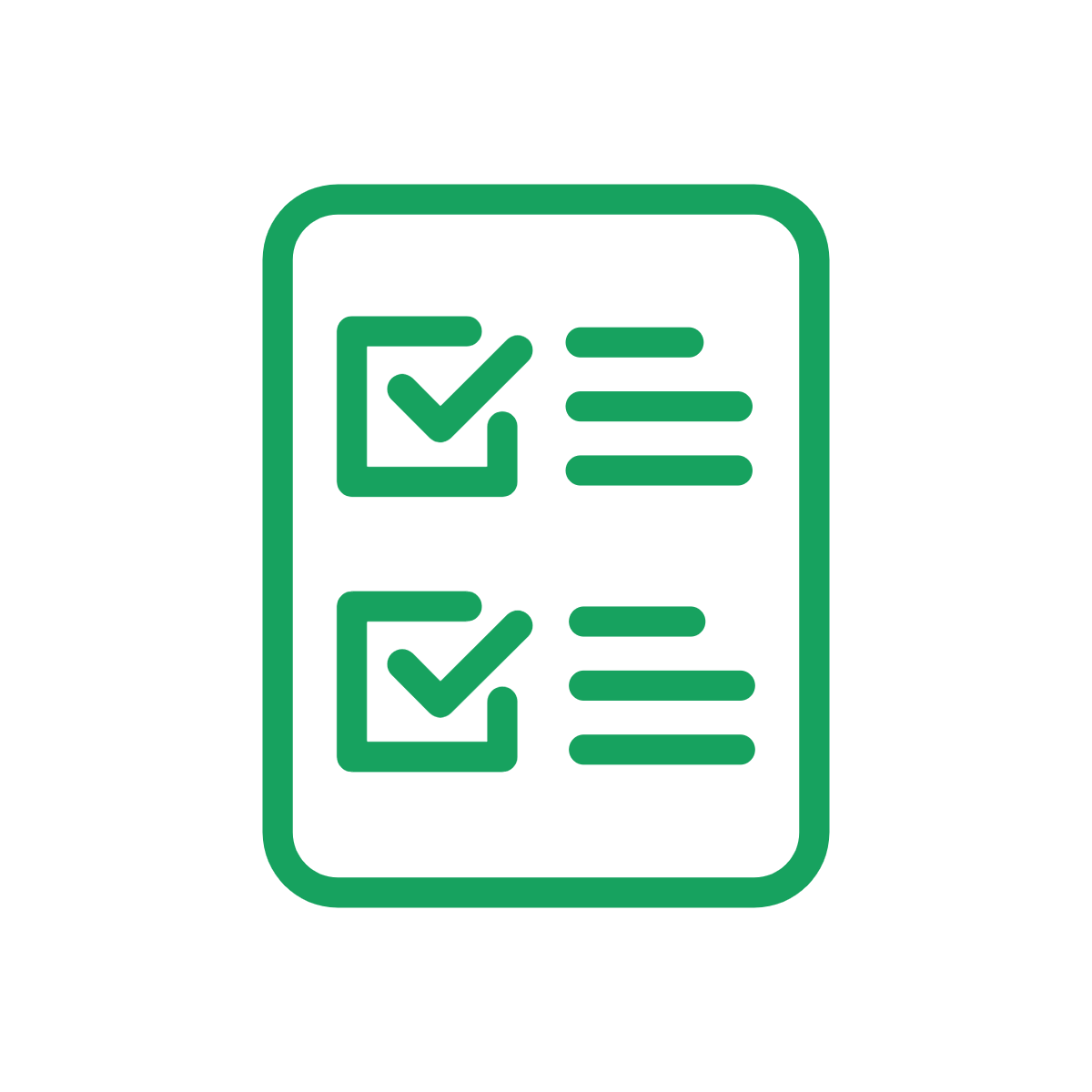

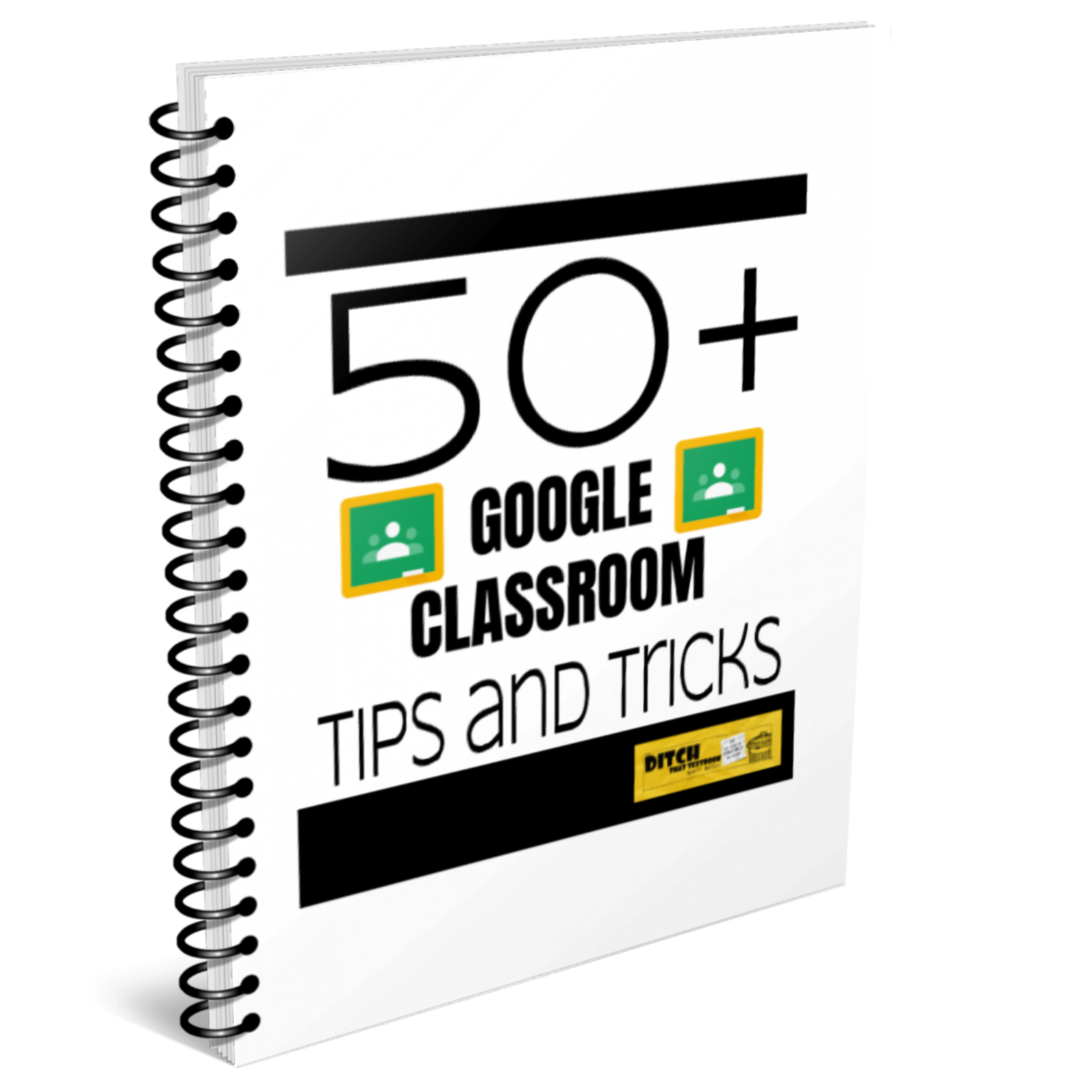


Kamagra Gold 100 mg offers effective relief for erectile dysfunction. Its quick action and affordable price make it a popular choice among men seeking reliable ED treatment.
When it comes to Aurogra 100, it’s essential to understand its significance and potential benefits. Aurogra 100 is a medication primarily used to treat erectile dysfunction (ED), a condition where men struggle to achieve or maintain an erection during sexual activity.
nice article, also know Prize Money Scholarship 2022
A debt of gratitude is in order for your data, it was truly exceptionally helpfull..
I read that Post and got it fine and enlightening on education If you don’t mind share more like that…
This article is very helpful for me. Thank you so much for the tips.
How to Apply Online for Ganga Quest Registration
Best Coaching Institute of IndiaTimes Academy
Thanks a Ton for taking Admission in Our Institute
KVS Online Admission
When Will I Get My SEBI PACL Refund
Thanks for these great hacks which really simplify work with Google Classroom! I started using this LMC only recently and it’s pretty hard for me to get inside of it so far! Thank God I came across this article 😉 By the way, recently found out that Google Classroom integrated with plagiarism checkerkvsonlineadmission.kvs.gov.in
I think this is It kvsonlineadmission.kvs.gov.in
I was looking for the Same. Thank you so Much. I will Implement the same on my blog – Admission Login
That’s an amazing post. all the tips which you mentioned are very helpful. admin thanks for sharing. keep it up great work all the best. here u can see DeskFlex’s Classroom Booking Software with 30 days of the free trial.
Very helpful article for me. Thanks a lot.
When I try to screen share it only shares audio and not video.
[…] […]
Is there a way to copy and entire topic of assignments? Not just one repost at a time. If wjnot, why not?? Or why can’t we schedule a post for more than one class at a time??
One more grading hack for Google Classroom to save time and provide better writing feedback, including speech-to-text, audio, and video: https://chrome.google.com/webstore/detail/e-comments/dccccbckfnndplihkaeiekggmeicbhgj/ Includes hundreds of customizable canned comments which identify, explain, and show students how to revise writing issues. So much faster and easier to use than the Google Classroom comment bank!
Thanks for these great hacks which really simplify work with Google Classroom! I started using this LMC only recently and it’s pretty hard for me to get inside of it so far! Thank God I came across this article 😉 By the way, recently found out that Google Classroom integrated with plagiarism checker http://www.unicheck.com. This makes it so easy to check the work on plagiarism! I advise everyone to try. It’s so cool that I live in such a high-tech time and it simplifies my teaching work so much!
Hi More than 50% of traffic to Wiley Online Library comes directly from Google, Google Scholar, and other search engines
When using google classroom, it would be helpful if the actual assignment was larger. When the list of students in on the left and you see one assignment on the right, it appears as a small box. I can usually tell if the students highlighted so with a quick look I can say you didn’t highlight what you used to make the inference. There is so much left open screen on the right that is not being used, so why is the assignment so small.
So helpful, thank you! Learned many small things I could be doing
[…] 10 Tips to Use Google Classroom Effectively […]
Kon Honaar Crorepati 2021 Marathi Registration Started from 24 March and will Continue till 2 April 2021. Apply Online on Sonyliv App
[…] 10 tips to use Google Classroom effectively and efficiently | Ditch That Textbook […]
[…] great resource that I stumbled upon was this one on Ditch That Textbook about Google Classroom and before that was another article about ways to use 20 collaborative […]
[…] 10 Tips to Use Google Classroom more effectively and effeciently […]
[…] Good stuff -> 10 tips to use Google Classroom effectively and efficiently #edtech #gafechat @jmattmiller ditchthattextbook.com/2016/03/03/10-… […]